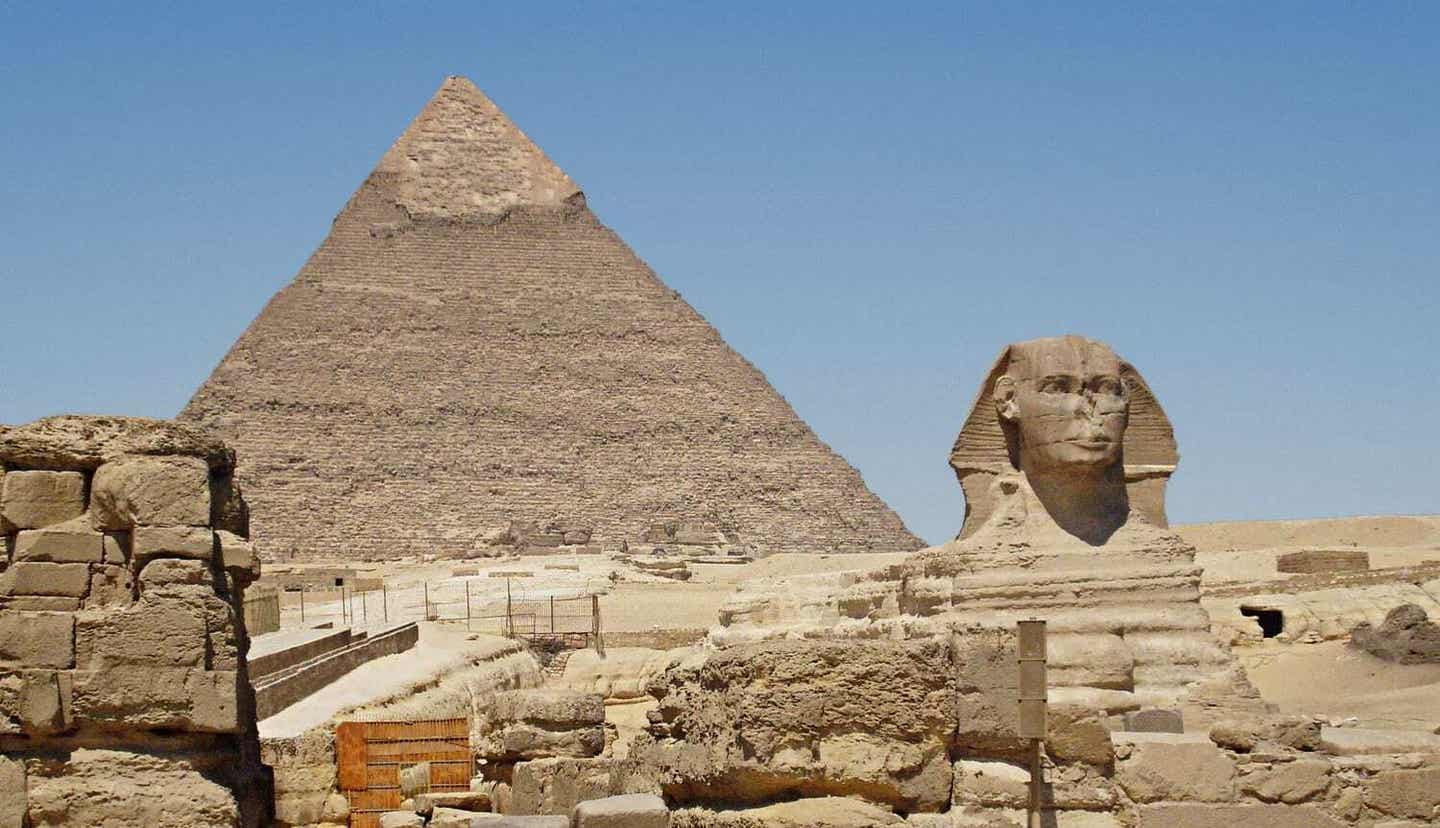Scientists unlock the hidden secrets of Egypt’s pyramids
How did the ancient Egyptians transport the massive stone blocks used in their construction?

For centuries, the grandeur and mystery of Egypt's pyramids, particularly the world-renowned Giza complex, have captivated historians, archaeologists, and the general public alike. Built over 4,000 years ago, these monumental structures have long posed a significant question: How did the ancient Egyptians transport the massive stone blocks used in their construction?
A recent groundbreaking study by a team from the University of North Carolina Wilmington has shed new light on this ancient enigma. They propose that the pyramids were built along a now-hidden branch of the River Nile, which once flowed close to these iconic structures but has since been buried under the sands of time and farmland.
Rediscovering the Lost River
For years, scholars have theorized that the ancient Egyptians must have relied on a nearby waterway to transport the heavy materials required for pyramid construction. However, pinpointing the exact location and characteristics of such a waterway remained elusive. "Nobody was certain of the location, the shape, the size, or proximity of this mega waterway to the actual pyramids site," said Professor Eman Ghoneim, a co-author of the study.
In a remarkable cross-continental collaboration, researchers from the United States, Egypt, and Australia combined their expertise and technologies to map this lost river branch. Utilizing radar satellite imagery, historical maps, geophysical surveys, and sediment coring, they unveiled the ancient watercourse, which they believe was buried due to a combination of severe drought and sandstorms thousands of years ago.
The Power of Modern Technology
The team employed advanced radar technology capable of penetrating the desert surface to produce images of hidden features beneath the sand. These efforts revealed not only the outlines of the buried river but also other ancient structures.
"We were able to uncover buried rivers and ancient structures running at the foothills of where the vast majority of the Ancient Egyptian pyramids lie," explained Prof. Ghoneim.
Related Stories
One of the study's co-authors, Dr. Suzanne Onstine, emphasized the significance of these findings in an interview with the BBC.
"Locating the actual [river] branch and having the data that shows there was a waterway that could be used for the transportation of heavier blocks, equipment, people, everything, really helps us explain pyramid construction," she said.
Mapping the Ahramat Branch
The newly discovered river branch, aptly named the Ahramat branch—'ahramat' meaning pyramids in Arabic—stretched approximately 64 kilometers (39 miles) in length and was between 200 and 700 meters (656-2,296 feet) wide. This waterway bordered a remarkable 31 pyramids, which were erected over a span of 1,000 years, from 4,700 to 3,700 years ago.
This revelation not only provides insight into the dense concentration of pyramids between Giza and Lisht but also offers a plausible explanation for how such grand structures could have been erected in what is now an arid expanse of the Saharan desert. The proximity of this ancient river to the pyramid complexes strongly suggests that it was "active and operational during the construction phase of these pyramids," according to the research paper published in the journal Communications Earth and Environment.
A Natural Solution to a Monumental Task
Dr. Onstine further elaborated on the practical advantages the ancient Egyptians might have harnessed from this river. Instead of relying solely on human labor to move the colossal stone blocks, they could have utilized the river's energy. "It's just a lot less effort to use the river's energy to carry these heavy blocks," she noted, highlighting how the Nile's waters would have significantly eased the transportation of materials.
The River Nile has always been the lifeline of Egypt, sustaining its civilizations for millennia. Even today, its significance remains undiminished. This study not only uncovers a critical chapter in the story of the pyramids' construction but also underscores the Nile's enduring importance to Egypt's history and culture.
As the sands of Egypt continue to reveal their secrets, the story of the pyramids—and the lost river that once flowed beside them—offers a fascinating glimpse into the ingenuity and resilience of one of the world's most remarkable ancient civilizations. The discovery of the Ahramat branch adds a vital piece to the puzzle, enhancing our understanding of how these timeless monuments were built and standing as a testament to the enduring legacy of the Nile.
For more science news stories check out our New Discoveries section at The Brighter Side of News.
Note: Materials provided above by The Brighter Side of News. Content may be edited for style and length.
Like these kind of feel good stories? Get the Brighter Side of News' newsletter.
Joshua Shavit
Science & Technology Writer | AI and Robotics Reporter
Joshua Shavit is a Los Angeles-based science and technology writer with a passion for exploring the breakthroughs shaping the future. As a contributor to The Brighter Side of News, he focuses on positive and transformative advancements in AI, technology, physics, engineering, robotics and space science. Joshua is currently working towards a Bachelor of Science in Business Administration at the University of California, Berkeley. He combines his academic background with a talent for storytelling, making complex scientific discoveries engaging and accessible. His work highlights the innovators behind the ideas, bringing readers closer to the people driving progress.



